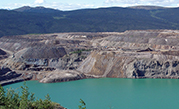To serve you better, our new website displays information specific to your location.
Please visit the site and bookmark it for future use.
Source Assessment to Support Closure Designs for the Western and Central Development Areas at a Site in Central Laos
Author(s):
Claire Linklater, John Chapman, Alison Hendry, Alex Watson, Justin Rowntree, Donna Noonan
Date:
Thursday, September 6, 2018
First presented:
Mine Closure 2018
Media:
Type:
Article
Category:
Mining
SRK Consulting assisted with the development of closure plans for the Western and Central Development Areas at a site in Central Laos. These areas include more than 40 pits, some backfilled, and 13 waste rock dumps. To support closure planning, it is important to identify which pits and dumps represent significant contaminant sources, and to understand how effectively contaminant release can be mitigated as part of the closure design.
Available information for the site included drill hole data, geological block models, current topographic surfaces, future pit and dump designs, outcomes from geochemical characterisation studies, surface and groundwater water quality monitoring data.
Conceptual models of the distribution of reactive materials and contaminant sources within key pits and dumps were developed. Post closure, the most significant ongoing sources of solute production are expected to be related to oxidising sulfide minerals present within unsaturated materials in:
• Above ground dumps
• Pit backfill located above the long term water table and
• Pit walls that remain exposed after closure, i.e. are not covered by backfill, or remain above the long
• term pit lake levels.
Field scale solute production rates (inferred from laboratory column test results) were combined with water flows to calculate water chemistry at source and downstream following mixing with other water sources. A companion paper describes development of a site water balance, including representation of surface and groundwater flows at the site.
The water quality calculations were used to examine the range of possible impacted water chemistries for (i) base case flows and solute loadings – to reflect the condition of the site prior to implementation of active closure measures, and (ii) post closure design conditions – to examine the effect of closure measures, such as emplacement of low infiltration covers on dumps.
Using the site wide water and solute load balance approach it was possible identify the optimal closure measures in terms of mitigation of water quality impacts to downstream receptors (drinking water resources).







